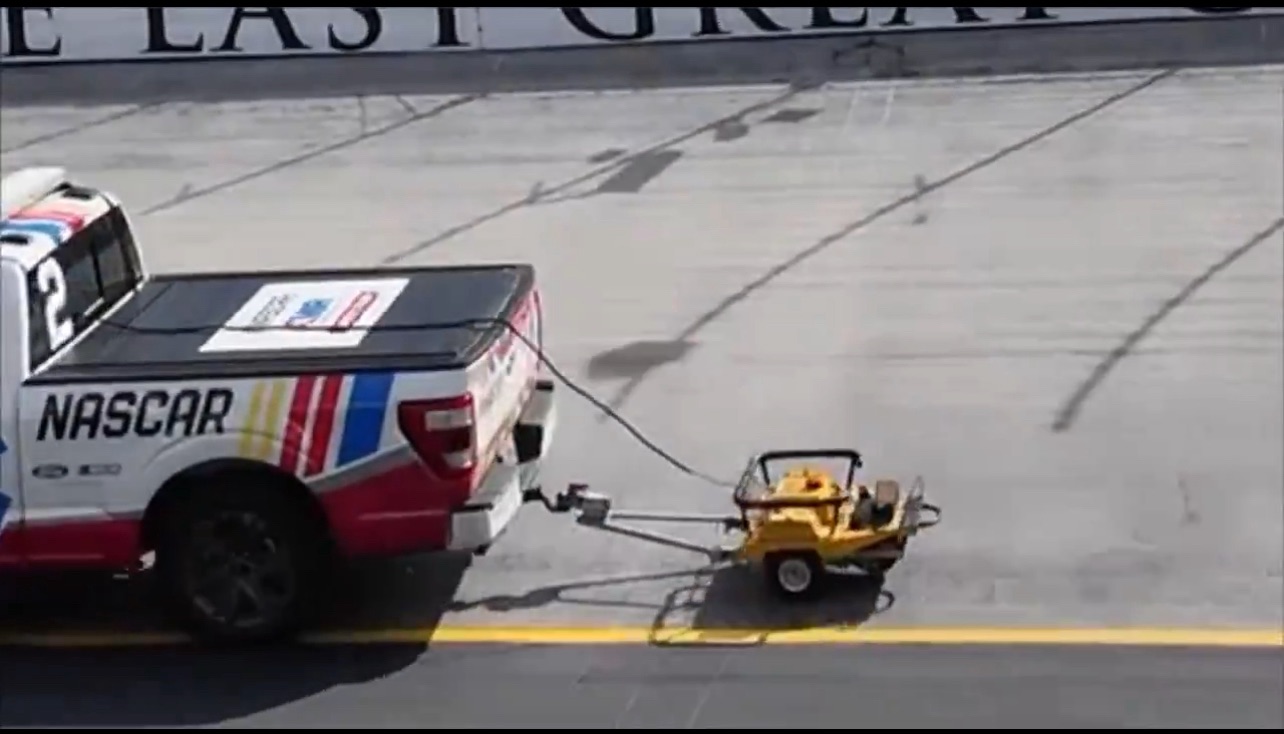In the high-speed world of NASCAR, every fraction of a second counts, and the racing surface at tracks like Bristol Motor Speedway can make all the difference. To ensure optimal performance and safety for both drivers and teams, NASCAR employs cutting-edge technology to monitor friction levels on the track. This data-driven approach, similar to methods used in airports for runway safety, plays a pivotal role in race preparation and track management.

Measuring Friction with Precision
Before applying PJ1, the track treatment resin used to enhance grip and create multiple racing grooves, NASCAR performs thorough checks of the track’s friction levels. This is done using specialized equipment, including a wheel outfitted with sensors and computers designed to measure friction. The wheel is run across the track surface, gathering real-time data on the grip and performance characteristics of the track.
The process is similar to what airports use to test runway friction to ensure safe landings and takeoffs. Just as these readings help pilots make critical decisions, the friction data gathered by NASCAR informs teams about how to set up their cars for the best possible performance. This technology allows NASCAR to assess how much grip drivers will have in different grooves, ensuring the track provides a balanced and competitive environment.
Pre- and Post-Activity Testing
NASCAR’s commitment to data collection doesn’t stop before the cars hit the track. After all track activity has concluded for the day, the friction levels are tested again. These post-race checks help NASCAR determine how the track has evolved over the course of practice sessions or races. Data gathered before and after track activity allows NASCAR officials to understand how the racing surface changes under stress and weather conditions.
Teams are particularly interested in how tire rubber, PJ1, and resin affect the surface throughout a race. The data collected gives them a clearer picture of how much grip to expect in each section of the track and enables them to adjust their car setups accordingly.
How This Impacts Race Strategy
For drivers and crew chiefs, knowing the track’s friction levels is a game changer. Bristol’s steep banks and tight turns already make it one of the most challenging tracks in the NASCAR circuit. Understanding where grip is high or low can help drivers determine the fastest line around the track.
Crew chiefs, armed with friction data, can make more informed decisions on tire pressure, suspension adjustments, and pit strategies. They can also predict how the track will change as the race progresses, giving them an edge in terms of car setup and strategy.
Looking to the Future
As technology continues to evolve, NASCAR’s use of data-driven methods to monitor track surfaces could expand. The friction measurement system is a crucial part of ensuring that drivers can race hard while still maintaining safety. NASCAR’s application of this technology shows how the sport continues to innovate, pushing the boundaries of performance while keeping fans on the edge of their seats.
As teams and drivers prepare for the upcoming race at Bristol, the data gathered on friction levels will be invaluable. It’s just one more way NASCAR is blending the art of racing with the science of technology.
















































